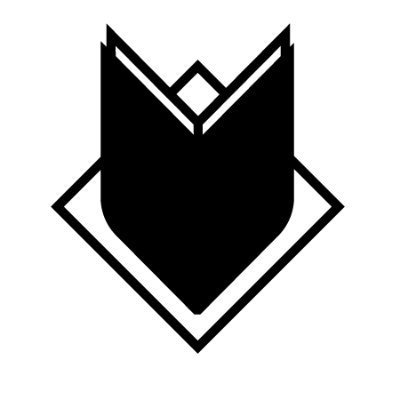INTERVIEW: Richard Bennett talks going from comics to prolific Hollywood storyboard artist
By Zack Quaintance — Richard Bennett has had a career that has taken him from illustrating X-Men and WildStorm comics in the ‘90s, to storyboarding many (many!) of the biggest action and sci-fi movies in recent years. Bennett has storyboarded a long list of films, with highlights like Zodiac, The Curious Case of Benjamin Button, The Social Network, Star Trek, Mission Impossible: Ghost Protocol, Avengers, Captain America: Winter Soldier, Captain America: Civil War, Tron: Legacy, Dunkirk, Tenet, and Spider-Man: No Way Home….the list goes on (and on…and on…).
Now, Bennett has compiled some of his best-known storyboard work into a new book, which you can back on Kickstarter now. You can also read my recent conversation with Bennett about the book below…enjoy!
INTERVIEW: Richard Bennett talks new book
ZACK QUAINTANCE: I'll start by noting I know very little about storyboarding. With that in mind, can I ask how your approach to that work differs from the comic art you did earlier in your career?
RICHARD BENNETT: I read the script first, then I meet with the director to talk about what scenes need to be boarded. If the director has any specific ideas they would let me know. But then I go ahead and start my first pass on the scene. I do have the freedom to include my own ideas, so I get to drawing.
In comic books, I'd just read the script/plot, and basically I was on my own as far as how to layout the pages, and deciding on the storytelling. I believe a common aspect between the two—even if comics are the end product, and storyboards a means to an end—is that if I believe in what’s drawn, establish a connection with the characters, and invest myself in the story, then I think there’s a higher chance both the comic book pages or a storyboarded scene would have more credibility. Somebody told me back during the comic book years that in order to have the readers believe in the drawn story, I had to believe it first. That sounds right to me and I always try to also apply that approach to storyboarding for film.
In comics, after I was done with the pages I’d give them to the editor, but I rarely had to do any changes. On the other hand, with storyboards, I’d meet again with the director after finishing the 1st pass to review the scene, and after taking notes I’d incorporate them into a second pass on the sequence. In general, that would suffice; in other cases with more more complex scenes, the work can take several versions of the scene and more time would be required.
ZACK: Your list of films you've work on is really lengthy and impressive. Aside from the obvious, how does the nature of a particular film effect the way you work on it?
RICHARD: Mainly in the pacing, I’d say. Technically the method is exactly the same, doesn’t change. But in the end, the one determining the overall vibe of the movie is the director, and it's their choice for any given film. I remember working with the same director in two different projects—both sci-fi—and yet he wanted a really tight camera approach to composition on one, hand held almost documentary style. On the other one, he needed exactly the opposite.
ZACK: Aside from the visuals, what does this new book offer readers? I understand there's quite a bit of insight into the craft...
RICHARD: The book is mostly ‘visual’. Since this showcases the work done before shooting, I think it’ll be very interesting for the readers to connect the dots and appreciate the starting point of a given scene from the different movies. In some sequences they’ll see the boards were just a graphic trampoline that eventually would evolve into something else. In other scenes, they’ll notice that the final big screen shot reflects the storyboards more directly. And they are all good, all part of the pre-planning.
ZACK: What do you look for in the projects you choose to work on?
RICHARD: To be honest, my main focus is to stay busy. I used to lean heavily on science fiction projects; that was my first love, but these days the focus is
mainly job longevity. If I’m available, and somebody calls, most likely I’ll take the job. There were some occasions where I had the opportunity to choose which project to take, only because they called around the same time. Then yes,
I considered the genre, but also how long it would last for. Of course, I also prioritize the same Producers I worked with before when they call again. Also, It’s always nice to be able to work with Directors whose work I admire.
ZACK: Finally, is there a film -- past or present -- that stands out as particularly well story-boarded? And if so, what is it?
RICHARD: I like different projects for different reasons, and the directors I worked with. I can say though, I’m particularly proud of ‘Zodiac’ and ‘The Curious Case of Benjamin Button,’ and the same goes for ‘Dunkirk’ and ’Tenet.’ Regarding the Legendary Monsterverse films, I had a blast working with Adam Wingard on the last ‘Godzilla vs Kong.’ In all these movies, the common denominator is that the storyboards drawn had an ideal balance between telling the story the directors needed and me being satisfied with the finished quality of the boards. It’s important that, when asked in the future, I have decent recent work samples to show.
Back the Godzilla & Kong: The Cinematic Storyboard Art of Richard Bennett
Read more features about comics!
Don’t forget to check out our weekly new comics reviews as well!
Zack Quaintance is a tech reporter by day and freelance writer by night/weekend. He Tweets compulsively about storytelling and comics as Comics Bookcase.












